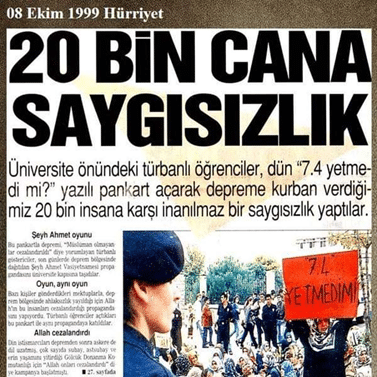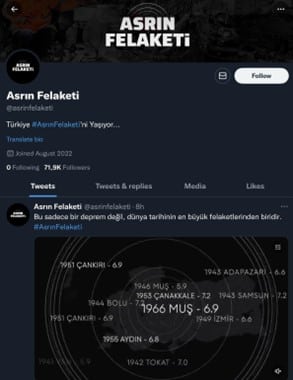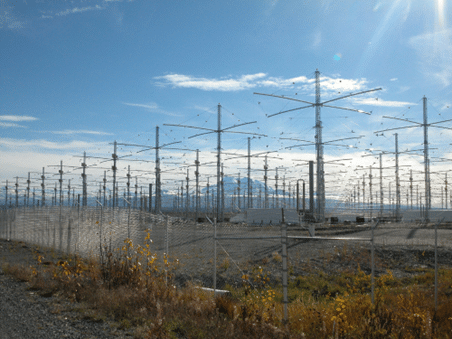Only a few hours after we hastily left our small flat in Istanbul during the 1999 İzmit earthquake, we found ourselves caught up in the communal gossip about the aftermath. “A whole apartment building collapsed just a few streets away!” one of our neighbours exclaimed. “A child was injured by falling debris from a church wall,” another added. Distressing stories, but I wasn’t aware of any noise, or even a dust cloud surrounding our peaceful neighbourhood. We were in a relatively safer district of the city.
When I asked which church, deep down, I knew they meant the Armenian church at the end of our street, just a few doors away. Hearing those exaggerated stories, I just didn’t have the energy to correct them and point out that the Armenian church’s tall walls were actually still standing, clear for anyone to see if they just took a moment to look.
These tales circulating on the streets in Istanbul were just that – tales. A garden wall had a crack, and a few bricks had fallen here and there, but no buildings had collapsed, and no one had been injured in our vicinity. It seemed like the stories had spiralled into exaggerated versions of themselves after just a few retellings. This tendency was perhaps not just a human way to deal with the unpredictable forces of nature, but also a means to give voice to our deeper fears and uncertainties.
This was well before we started using the term the ‘post-truth’ era – a tongue-in-cheek name for our time, where emotions and personal beliefs often overshadow objective facts in shaping public opinion. Fact-checking organisations are now instrumental in analysing information flow and engaging fake news, contributing significantly to tackling misinformation, but misinformation can still evolve into elaborate conspiracy theories during times of crisis.
Whenever we explore issues like this, it’s crucial to remember that we need to approach this topic with empathy. Earthquakes are not just ordinary natural disasters; they are personal tragedies, bringing immense pain and loss to those directly affected. People lose their loved ones, their homes, their way of life, and often their mental well-being. Even for those watching events unfold on social media from a distance, it’s an extremely difficult experience. As we explore these phenomena, our aim is not to assign blame or ridicule those who believed rumours in such trying times. Instead, our focus is on understanding the dynamics of misinformation, disinformation, and conspiracy theories, which, if unchecked, can cause substantial harm to society.
Societal Trauma
Earthquakes represent profound traumas for affected societies, disrupting lives and fostering a sense of deep uncertainty and loss of control. As an example, the 1999 Izmit earthquake was a major disaster for my generation, hitting one of Turkey’s most populous areas with unprecedented force. Those who rushed into the disaster zone to offer help were met with heart-breaking scenes of devastation. Meanwhile, others experienced the tragedy through the media, which painted vivid, heart-wrenching pictures of loss and ruin.
Fast forward to 2023, when an even more devastating earthquake struck southeastern Turkey and northwest Syria, not once, but twice. At its epicentre and in Antakya, the initial quake registered an extreme intensity of XII – the highest on the Mercalli scale. Today, the official death toll stands at nearly 60,000, with over 121,000 injured across both regions. This time, the catastrophe unfolded under the full gaze of social media. Twitter became the primary source of information between the global audience and the disaster zone. Yet, the selective lens of social media often spotlighted the disaster’s most sensational news, inadvertently leading to the circulation of unverified information.
The 2023 earthquake had a markedly different impact on those far from the epicentre compared to the 1999 quake. Back then, Istanbul experienced tremors, but suffered less damage than other areas. It was clear at that time that Istanbul was not immune to earthquakes, with experts cautioning that a significant disaster could hit the city within the next 30 years. The 2023 earthquake served as a stark reminder of Istanbul’s continued vulnerability and lack of preparedness for such events.
In such times, people often feel compelled by uncertainty and a sense of losing control to connect disparate pieces of information, engaging in rumours and conspiracies as a way to relieve emotional distress. Events are often attributed to the deliberate actions of hostile groups, or fears arise that the worst scenarios are unfolding. In other words, while the crisis itself may serve as a catalyst for misinformation, it ultimately falls to political ideologies to shape the narratives, pinpoint the villains, and establish the alleged sinister purposes.
Ideologies and the Disaster Narratives
These moments of crisis in history, such as the onset of the COVID-19 pandemic, invariably give rise to their own conspiratorial narratives on different scales. Although initial reactions to these events usually don’t revolve around crafting sinister plots, misinformation and disinformation quickly surge to the forefront. One example of this is the fake news stories about people collapsing in the streets of China during the early days of the pandemic.
Earthquakes are no exception, with misinformation spreading in the initial days and evolving into various narratives as time goes on. According to Journo’s analysis, this phenomenon isn’t new, extending back to before the last century. The 1894 Istanbul earthquake, for instance, also stirred the political environment with conspiracy theories, fake news incidents, and political manoeuvres by Sultan Abdulhamid of the Ottoman Empire. Such disaster narratives have similarly influenced the partisan responses to recent earthquakes, too.

The 1999 Izmit Earthquake, which devastated a naval base in Gölcük at the disaster’s epicentre, tragically claimed the lives of 200 sailors, including the Naval Academy’s Commander. Amid the politically-charged atmosphere of the time, some Islamists, then in opposition, interpreted the earthquake as ‘divine retribution against secularism’, a view influenced by some religious narratives depicting earthquakes as ‘divine punishments for wrongdoing’. This stance was starkly remembered by an Islamist woman protester who brandished a cruel poster proclaiming: ‘Wasn’t 7.4 enough?’
However, the Islamists in power during the 2023 earthquake mostly avoided the ‘divine punishment’ interpretation. On the contrary, one of the AKP government’s initial responses was to create a Twitter account named ‘The Disaster of the Century’ (Asrın Felaketi). This account quickly became central to their strategy, framing the earthquake as an inevitable calamity. While the account was shut down due to considerable social media backlash, the narrative persisted through other channels. Concurrently, government-backed media outlets dedicated considerable effort to debunking conspiracy theories related to the earthquake and attributed the spread of misinformation to ‘others’.

Anti-Western and antisemitic perspectives frequently surface in the context of earthquakes. The Sèvres Syndrome represents a deep-seated mistrust of the West and non-Muslim minorities across political traditions and Israel often labeled as an arch-enemy, particularly for traditional Islamists. Additionally, contemporary political issues, such as those involving Syrian refugees, have unfortunately placed the immigrant population in the crosshairs, despite many being victims of the recent earthquake themselves. In every case, ideologically-driven conspiracy theories across the political spectrum share a common theme: attributing events to covert operations by influential forces. ‘Others’ are consistently depicted as either complicit with or actively participating in these schemes. The HAARP project serves as a prime example of this theme, which, indifferent to various political affiliations, has been resurrected after every major earthquake since 1999.
HAARP Conspiracies: A Not-So-Twisted Tale
The High-frequency Active Auroral Research Program (HAARP) is a facility dedicated to the study of the ionosphere, the uppermost, ionized section of Earth’s atmosphere. Originally funded largely by the US Air Force, the US Navy, and the Defense Advanced Research Projects Agency (DARPA), the program was established to analyse the ionosphere and explore the potential for creating ionospheric enhancement technology for radio communications and surveillance. Over time, however, the military’s interest waned, and the program was ultimately handed over to the University of Alaska Fairbanks.

In the realm of conspiracy theories, HAARP certainly holds a prominent place. As American journalist Sharon Weinberger aptly put it, HAARP is the “Moby Dick” of conspiracy theories. Perhaps this pervasive fascination is fuelled by a general technophobia towards all things electromagnetic, magnified by images of HAARP’s vast antenna array. These pictures, sometimes accompanied by the addition of an irrelevant radar dome platform and obscured references to “some extraordinary technology that Tesla invented”, feed into claims that HAARP is a tool for mind control, geo-engineering, and even triggering earthquakes.
HAARP is often implicated as the cause behind many earthquakes in Turkey, including the 1999 Izmit Earthquake. A chief proponent of this theory is Melih Gokcek, a well-known conspiracy theorist and former mayor of Ankara, who asserts that HAARP is a secret earthquake-inducing weapon being tested by the US. As outlined in Doğruluk Payı, he argues that the US chose the North Anatolian Fault Zone as a testing ground due to its similarities with the San Andreas Fault. Their supposed aim was to alleviate the tension in the fault zone, thus reducing the risk of a major quake. Intriguingly, he posits that the US contracted this dubious operation to Israel, which purportedly harboured its own geopolitical interests over Turkey. As the conspiracy narrative goes, the plan went off track, necessitating a cover-up, which manifested as a complete blackout in the earthquake zone.

This conspiracy narrative isn’t exclusive to Turkey. It has surfaced in the wake of various seismic events across the globe, including the earthquakes in Haiti and Christchurch in 2010. Although the storyline varies somewhat depending on the specific incident, the central idea remains consistent and has proven remarkably resilient to many debunking efforts. At times, it’s presented as an experiment gone wrong; in other instances, it’s purported to be part of a calculated plan of invasion or retaliation. For example, in the aftermath of the 2023 Turkey-Syria earthquake, certain conspiracy theories amplified by social media bots suggested that NATO was using HAARP to punish Turkey for impeding Finland’s and Sweden’s bids to join the alliance.
The Modern Twist on Invasion Paranoia
Whenever a conspiracy theory suggests that an earthquake is man-made, it invariably implies a motive for such sinister forces at play. Frequently, this motive comes wrapped in an all-too-familiar paranoia: invasion. This mindset has permeated various factions in Turkish politics, as we’ve seen in previous examples. Post-2000, fears of a U.S. invasion have become an integral part of the leftist-nationalist narrative in Turkey.
One often-cited “proof” of this impending invasion is the 2002 Millenium Challenge war game exercise conducted by the U.S. Armed Forces. The MC02 was a colossal and expensive war game in which the U.S., represented by the colour blue, was pitted against an enemy represented by the colour red. Conspiracy theorists maintain that the war game scenario involves a Middle Eastern country that suffers a catastrophic earthquake, resulting in a failure to maintain societal order. The U.S. Armed Forces then allegedly invaded the country to restore peace and reintroduce democracy.
While such a narrative isn’t entirely inconceivable, the truth deviates somewhat from this tale. In the real MC02 scenario, the ‘red country’ represents Iraq or Iran. The exercise, in reality, was unrelated to Turkey, and it took a controversial turn when it was unexpectedly halted due to the ‘blue forces’ experiencing heavy losses. Far from being a covert operation, MC02 has been the subject of widespread discussion and criticism within the US public sphere.
The notion of a U.S. invasion frequently circulates within anti-American conspiracy culture in Turkey, often referred to as either the implementation of a ‘Fifth Column’, an outright military invasion, or even engineering Turkish politics. When the U.S. deployed the supercarrier USS George H.W. Bush to the region to assist Turkey in the recent earthquake, this invasion paranoia resurfaced and became intertwined with the MC02 legend. The merged theory was then disseminated by both leftist nationalists and right-wing journalists aligned with the government, demonstrating its widespread appeal.
From Thor’s Hammer to Nuclear Bursts
HAARP was not the only tool in the secret arsenal of sinister forces. Another one is the concept of dropping metal rods from a satellite in space to trigger earthquakes. This claim actually borrows inspiration from an old theoretical proposal variously known as Project Thor, Kinetic Bombardment, or ‘Rods from God’. The concept revolves around dropping tungsten rods from orbit to strike the earth with tremendous force.
In 2003, such a project was indeed officially proposed by the US Air Force under the name “Hypervelocity Rod Bundles”. However, this initiative was never pursued, due to unreasonable costs and technical shortcomings. Furthermore, the proposal never intended to trigger earthquakes, as reaching fault zones beneath the earth’s surface via this method is simply impossible. Yet, these facts did not stop Serdar Hüseyin Yıldırım, the Head of the Turkish Space Agency. During a conference in 2021, he confidently described an engineering project in which 10-meter-long titanium rods could purportedly be aimed to hit targets 5 km below the earth’s surface to trigger earthquakes. A video of his talk resurfaced a week after the earthquake, as alleged evidence of a deliberate attack.

The theories don’t stop there. It might be challenging to mask an operation in the skies, but surely a nefarious plot could be hidden beneath our feet? A prevalent conspiracy plot suggests that earthquakes can be triggered by underground impacts. There are numerous variations of this theme. Often, shadowy entities or companies bankrolled by hostile nations require some sort of access to a fault zone. In the case of the 2023 Turkey-Syria earthquake, it was an oil well as the point of access. For Fukushima, the narrative leads us deep into the ocean. The real impact often comes from injecting water into the oil wells or even detonating nuclear bombs to stir up seismic activity. Motivations vary from retaliation for aid provided to Iran to “testing” the “Great Reset” in the target country.
Cross Pollination from the Bigger Picture
Conspiracy theories in Turkey do not develop in isolation. There exists a continuous interaction with different networks, including European and American right-wing groups. During the Covid-19 pandemic, prominent individuals within Turkish conspiracy circles frequently adapted Western theories, such as germ denialism, the Great Reset, and 5G fears, to suit local contexts. This ‘cross-pollination‘ from various international conspiracy networks was also evident following the recent earthquake.
The dominant narrative among these groups posits that ‘globalists’, or the World Economic Forum, or some other evil orchestrating ‘the new world order’, are responsible for triggering earthquakes. The alleged goal is to demolish these cities to the ground and construct ‘self-imposed open-air prisons‘ in their place. These conspiracy theories are also significantly influenced by climate denialism and other Western notions. Initiatives for ‘smart cities’ are viewed as a façade for implementing the 15-minute cities concept, and the Paris Agreement is seen as a blueprint for this overarching conspiracy.
Bridging the Evidence Gap with Anomaly Hunting
Various conspiracy subcultures often hunt ‘evidence’ from anomalies. They perceive skulls in the 9/11 explosions, or spot patterns resembling eyes in clouds, and notice meaningful numbers in news stories. This tendency to link unrelated elements is common; individuals identify anomalies and interpret them as proof for the wildest conspiracies. Earthquake-related conspiracy theories are no exception to this pattern.
In fringe circles, apophenia is a common theme. For instance, three weeks before the recent earthquake, a red, eye-like lenticular cloud appeared in the sky over Bursa, located on the opposite side of the country. In hindsight, some have interpreted this as a warning sign. Additionally, consider the ‘hidden eye’ symbol in the seismic hazard map used by CNN Turkey. Or could it be merely coincidental that a cloud formation, resembling the map of Turkey, was featured on the cover of Time magazine in May 2021, with lightning striking precisely over the earthquake zone?
Symbolism often plays a crucial role in bridging reality and fantasy when constructing or sustaining belief in conspiracy theories. However, a significant part of anomaly hunting usually stems from various cognitive biases and, at times, from a lack of understanding of science. Examples of this include interpreting celestial events, sudden increases in temperature, or unusual occurrences like sea bubbles as predictors of earthquakes.
In 1999, just six days before the earthquake, a total solar eclipse was observed in Turkey. Subsequently, many people linked these two events. Yet, this kind of association is not exclusive to this incident. The immense gravitational forces of celestial objects are believed by some to influence fault lines. Earthquake forecasters and astrologers often use planetary alignments or moon phases to predict earthquakes. We know that these gravitational forces are actually weak at great distances and cannot penetrate deep enough to affect fault lines. While scientific findings regarding tidal stress are mixed, it is not considered a reliable predictor of earthquakes. Nevertheless, people often choose to believe in these predictions, selectively remembering only the instances where they appear to have been correct.
These misconceptions are also partly rooted in a lack of understanding of earthquake science. If one comprehends the scale of the forces that move tectonic plates, they would realize that such a force cannot be replicated by the water released by dairy farmers, an electromagnetic wave generated by an antenna on a small ship, or a minor explosion a few hundred meters below the ground.
Some discrepancies are often actively pursued to reinforce the belief that the establishment is not trustworthy. For example, in the immediate aftermath of an earthquake, various organisations may report different magnitudes before arriving at a consensus. This variation is due to different measurements being calculated at different locations. However, when one authority announces a lower magnitude than another, conspiracy theorists may interpret this as evidence of a hidden agenda. Furthermore, if a scientist publicly disagrees with another, or explains the limitations of science in providing the answers we desperately seek, this too is often attributed to something suspicious. This happens when scientific bodies cannot provide a definitive explanation for earthquake lights, a phenomenon often seized upon as proof of something more sinister, such as HAARP activity or Project Blue Beam, in conspiracy circles.
In recent decades, these issues were predominantly related to fact-checking. However, there has been a noticeable shift: conspiracy thinking now often limits debunking efforts. Within many conspiracy circles, fact-checkers are dismissed as shills, leading to their increasingly limited access to these tightly-knit bubbles.
Conclusion
When understanding the place of earthquake conspiracies within the broader realm of misinformation, it’s essential to acknowledge the psychological motives that drive individuals toward such narratives, especially in moments of crisis and distress. Our inclination to seek patterns and assign meaning to the chaos of natural disaster taps into our deepest fears, uncertainties, and our loss for control. Political ideologies further shape narratives around uneasy situations, providing a scaffold that resonates with our existing worldviews, and also determining our affiliations with particular social groups. By finding solace in these affiliations, we risk confining ourselves within echo chambers that skew our perception of reality, insulated from dissenting voices and inconvenient truths.
Clearly, the nature of conspiracism is complex, and we cannot grasp all of it by just looking at a few examples. Yet, beginning to understand how the conspiracy chatter is formed — through our psychology, political beliefs, and the spread of false information — is an important step. These observations might be useful for effectively engaging with the complex onset of misinformation and conspiratorial chatter during natural disasters.
It’s also crucial to recognize that we are all susceptible to these narratives at different levels. Conspiracy theories usually come from our natural instincts to comprehend and rationalise our perceptions of reality. Embracing compassionate skepticism towards those with differing beliefs, especially in times of crisis, allows us to develop a more nuanced and understanding engagement with the world around us, paving the way for a more informed and considerate discourse.
Further Reading:
- Angell, Elizabeth. (2014). Assembling disaster: Earthquakes and urban politics in Istanbul, City: analysis of urban trends, culture, theory, policy, action, 18:6, 667-678, http://dx.doi.org/10.1080/13604813.2014.962881
- Dallo, Irina, Corradini, Marina, Fallou, Laure, & Marti, Michèle. (2022). How to fight misinformation about earthquakes? A Communication Guide. ETH Zurich. https://doi.org/10.3929/ETHZ-B-000530319
- Lubbock, John. (2023). Conspiracies are depoliticising Turkey’s earthquake crisis https://www.huckmag.com/article/the-rise-of-conspiracy-theories-after-turkeys-earthquake-crisis
- Merlan, Anna. (2019). Earthquake conspiracy theorists are wreaking havoc during emergencies. https://www.vice.com/en/article/kz4jyz/earthquake-conspiracy-theorists-are-wreaking-havoc-during-emergencies



